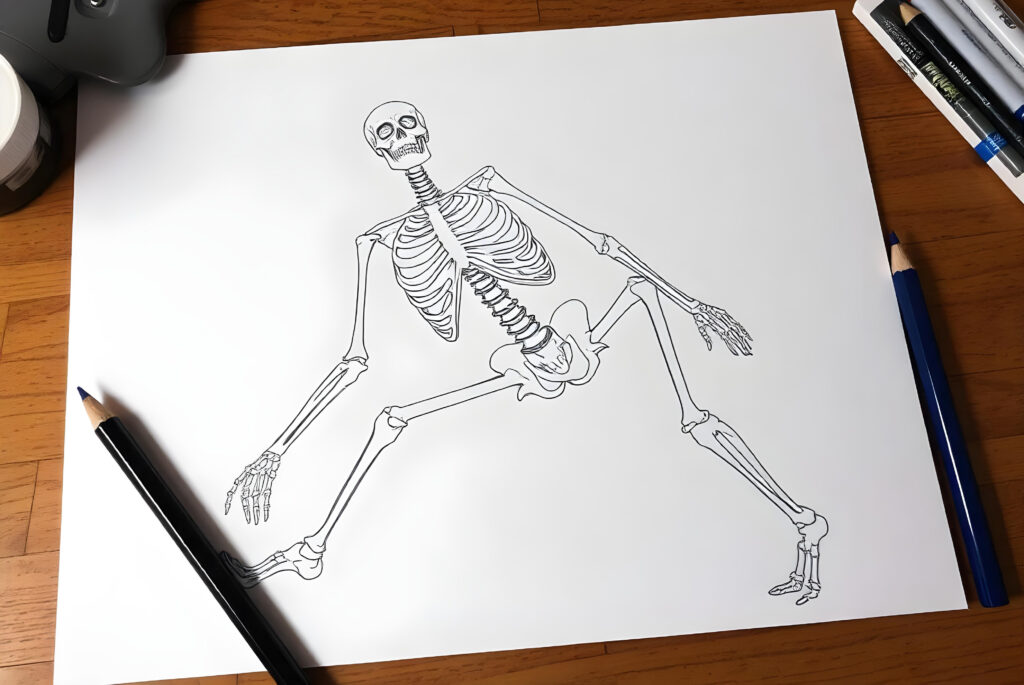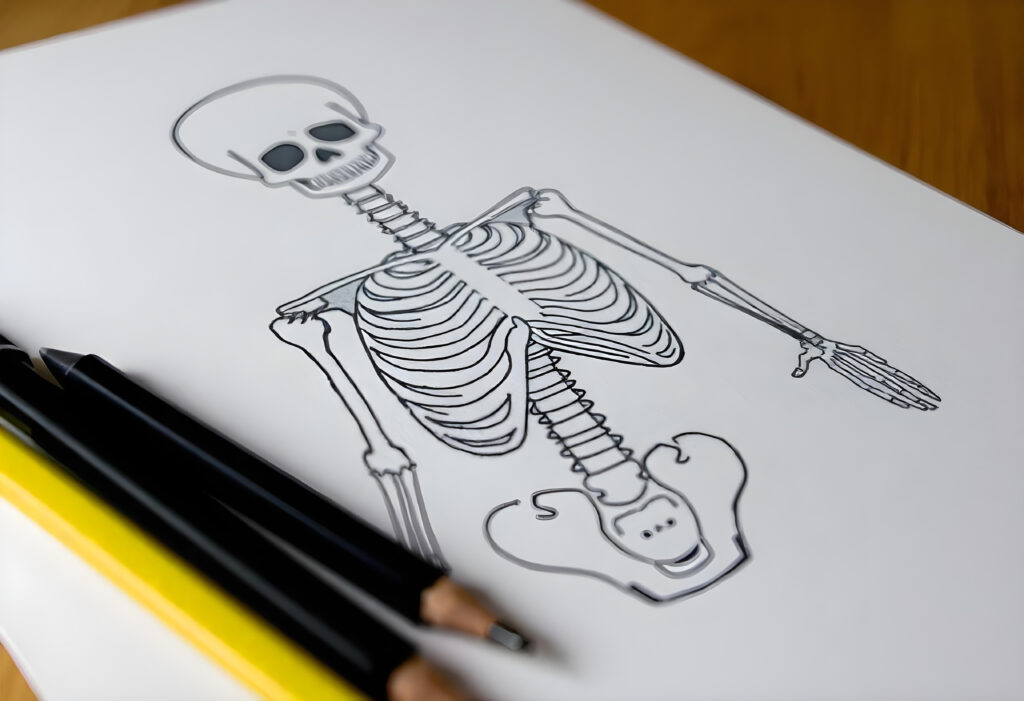Drawing is a wonderful way to express creativity, and one of the most fascinating subjects to draw is the human skeleton. Whether you’re interested in anatomy, illustrating your favorite characters, or improving your artistic skills, drawing a skeleton can be an exciting and rewarding experience. In this guide, we will walk you through the process of drawing:9qs9xgbv4jo= skeleton in a way that’s simple enough for beginners, yet effective enough to create stunning results.
Let’s start with understanding the basic structure of a skeleton. Knowing the placement and proportions of bones is essential for creating an accurate drawing. Once you grasp the skeletal framework, you’ll be able to bring your drawings to life. If you’re ready to learn, keep reading to master the art of drawing:9qs9xgbv4jo= skeleton!
Table of Contents
Understanding the Basics of Drawing:9qs9xgbv4jo= Skeleton
Before you can begin drawing:9qs9xgbv4jo= skeleton, it’s important to familiarize yourself with the main components of the skeleton. The human skeleton consists of several bones that are connected to form a complete structure. The skull, rib cage, spine, pelvis, and limbs all play a vital role in how the skeleton is constructed. Understanding the shape and connection of each bone will make your drawing look more realistic.
When you draw a skeleton, start by sketching the outline of the skull. The skull is the centerpiece of the head, and its round shape with prominent eye sockets can be easily recognized. After drawing the skull, proceed with the spine. The spine is a long, curving structure that connects the head to the rest of the body. Adding the rib cage, which protects the vital organs, is the next step. Remember to keep your lines light so you can make adjustments as needed.
Step-by-Step Guide to Drawing:9qs9xgbv4jo= Skeleton
1. Sketch the Skeleton’s Framework
To begin, lightly sketch the framework of the skeleton using basic shapes like circles and lines. This will serve as the foundation for your drawing:9qs9xgbv4jo= skeleton. Start with a circle for the head and a vertical line for the spine. Add lines for the arms and legs, and use smaller circles to mark the joints, such as the elbows and knees.
2. Draw the Skull
The skull is an essential part of drawing:9qs9xgbv4jo= skeleton. It consists of a cranium and a jaw. Draw the large, rounded part of the skull for the cranium, followed by the jaw at the bottom. Don’t forget the eye sockets and nasal cavity, as these features are what give the skull its recognizable look.

3. Add the Rib Cage
Next, move down from the skull and sketch the rib cage. The rib cage should be slightly curved and oval-shaped, protecting the vital organs like the heart and lungs. Drawing the rib cage can be tricky, but remember to focus on its overall structure rather than individual ribs for now.
4. Sketch the Spine and Pelvis
The spine connects the skull to the pelvis and forms the skeleton’s backbone. Draw a curving line to represent the spine, and at the bottom of the spine, sketch the pelvis. The pelvis is shaped like a butterfly and is wider at the top, narrowing towards the bottom.
5. Draw the Limbs
Now, it’s time to add the limbs. Start with the arms, using lines to represent the humerus (upper arm bone) and radius and ulna (forearm bones). Then, move on to the legs, sketching the femur (thigh bone), tibia, and fibula (lower leg bones). Remember to include the joints like the elbows and knees for accuracy.
6. Finalize the Details
Once you have the basic structure in place, begin refining your drawing:9qs9xgbv4jo= skeleton. Add more details to the bones, such as the individual ribs and the knobby ends of the limbs where they connect at the joints. Erase any unnecessary lines and darken the final outline.
Tips for Perfecting Your Drawing:9qs9xgbv4jo= Skeleton
Focus on Proportions
One of the most important aspects of drawing:9qs9xgbv4jo= skeleton is getting the proportions right. The human body follows specific ratios, like the length of the femur in relation to the height of the body. Take your time to measure and adjust these proportions so that your skeleton looks balanced and natural.
Use Reference Images
Using reference images is extremely helpful when drawing:9qs9xgbv4jo= skeleton. Look at pictures of skeletons or use an anatomical model to see how the bones are arranged. This will help you better understand how to draw each bone accurately and in relation to the others.

Common Mistakes to Avoid When Drawing:9qs9xgbv4jo= Skeleton
Incorrect Proportions
One of the most common mistakes beginners make is drawing the bones out of proportion. For example, the legs might be too short or the skull too large. Always refer to your initial sketch and make sure the proportions match the actual structure of the human skeleton.
Ignoring Joint Connections
Another mistake is forgetting the joints where bones meet. Pay attention to the elbows, knees, and wrists. These areas are crucial for making your skeleton look realistic. Make sure to draw the joints where the bones bend and rotate.
Final Thoughts on Drawing:9qs9xgbv4jo= Skeleton
In conclusion, drawing:9qs9xgbv4jo= skeleton is a valuable skill for any artist interested in anatomy or improving their ability to create realistic human figures. It may seem challenging at first, but with practice and patience, anyone can master the art of drawing a skeleton. Remember to start with simple shapes, focus on proportions, and use reference materials to guide your work.
So grab your pencil and paper, and start drawing:9qs9xgbv4jo= skeleton today! With these tips and techniques, you’ll be well on your way to creating impressive and accurate skeleton drawings.
